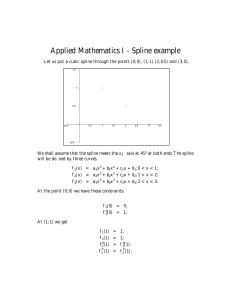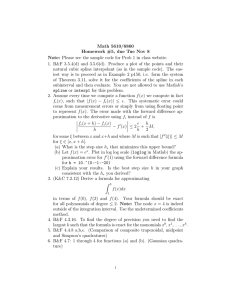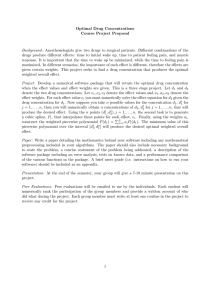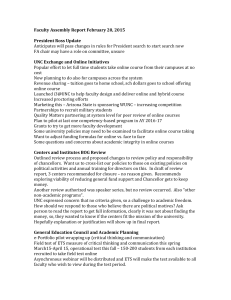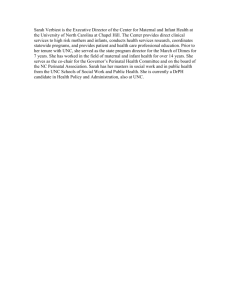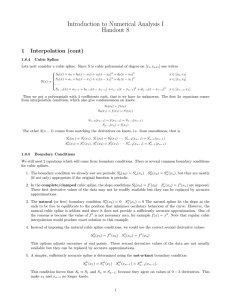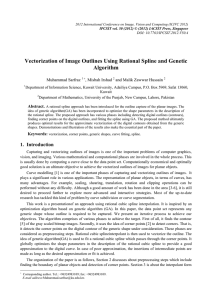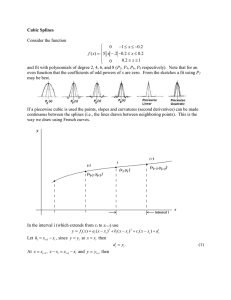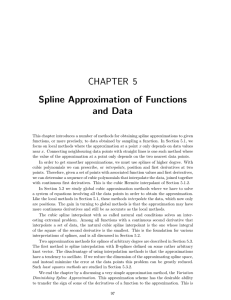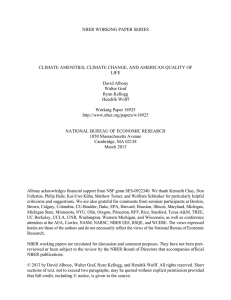Optimal Drug Concentrations Course Project Details
advertisement
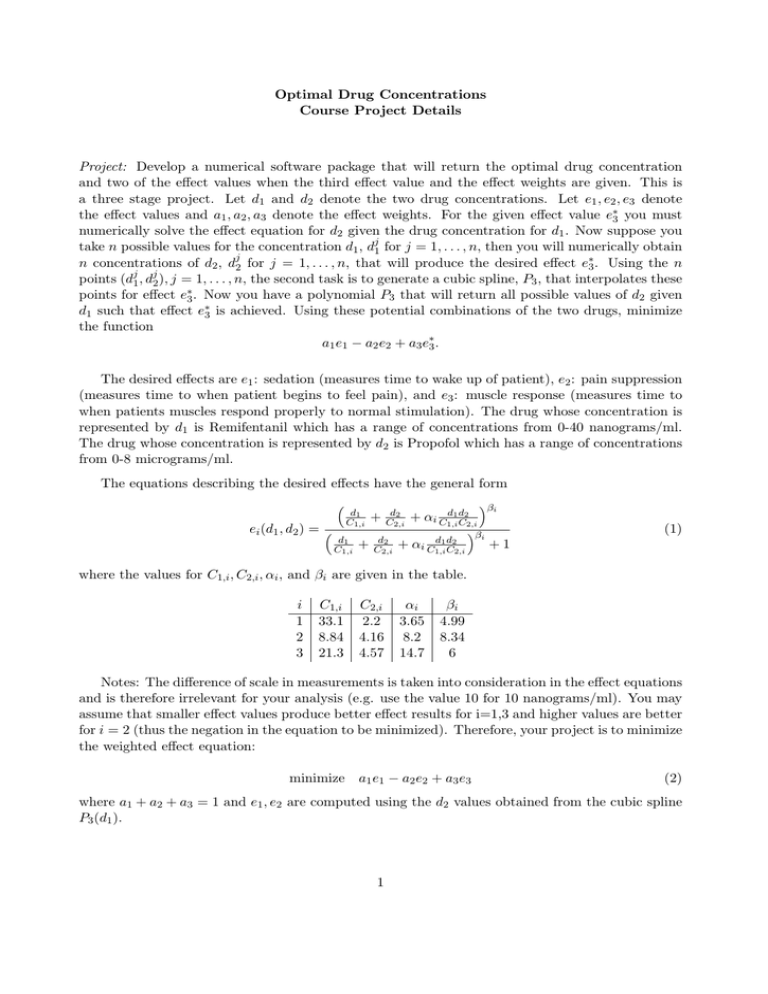
Optimal Drug Concentrations Course Project Details Project: Develop a numerical software package that will return the optimal drug concentration and two of the effect values when the third effect value and the effect weights are given. This is a three stage project. Let d1 and d2 denote the two drug concentrations. Let e1 , e2 , e3 denote the effect values and a1 , a2 , a3 denote the effect weights. For the given effect value e∗3 you must numerically solve the effect equation for d2 given the drug concentration for d1 . Now suppose you take n possible values for the concentration d1 , dj1 for j = 1, . . . , n, then you will numerically obtain n concentrations of d2 , dj2 for j = 1, . . . , n, that will produce the desired effect e∗3 . Using the n points (dj1 , dj2 ), j = 1, . . . , n, the second task is to generate a cubic spline, P3 , that interpolates these points for effect e∗3 . Now you have a polynomial P3 that will return all possible values of d2 given d1 such that effect e∗3 is achieved. Using these potential combinations of the two drugs, minimize the function a1 e1 − a2 e2 + a3 e∗3 . The desired effects are e1 : sedation (measures time to wake up of patient), e2 : pain suppression (measures time to when patient begins to feel pain), and e3 : muscle response (measures time to when patients muscles respond properly to normal stimulation). The drug whose concentration is represented by d1 is Remifentanil which has a range of concentrations from 0-40 nanograms/ml. The drug whose concentration is represented by d2 is Propofol which has a range of concentrations from 0-8 micrograms/ml. The equations describing the desired effects have the general form ei (d1 , d2 ) = d1 C1,i d1 C1,i + + d2 C2,i d2 C2,i + d1 d2 + αi C1,i C2,i d1 d2 αi C1,i C2,i βi βi (1) +1 where the values for C1,i , C2,i , αi , and βi are given in the table. i 1 2 3 C1,i 33.1 8.84 21.3 C2,i 2.2 4.16 4.57 αi 3.65 8.2 14.7 βi 4.99 8.34 6 Notes: The difference of scale in measurements is taken into consideration in the effect equations and is therefore irrelevant for your analysis (e.g. use the value 10 for 10 nanograms/ml). You may assume that smaller effect values produce better effect results for i=1,3 and higher values are better for i = 2 (thus the negation in the equation to be minimized). Therefore, your project is to minimize the weighted effect equation: minimize a1 e1 − a2 e2 + a3 e3 (2) where a1 + a2 + a3 = 1 and e1 , e2 are computed using the d2 values obtained from the cubic spline P3 (d1 ). 1 A POSSIBLE OUTLINE Your function should take the inputs e∗3 , a1 , a2 , a3 . Sample values (dk1 , dk2 ), for say k = 1, . . . , 11 where dk2 is the solution to the equation e∗3 = e3 (dk1 , x). n Create a free cubic spline that interpolates (dk1 , dk2 ) o11 k=1 . Write a function f unc(e∗3 , d1 ) that is the cubic spline returning values d2 for any d1 ∈ [0, 40]. Use your code for false postion or the secant method on the function e3 (d1 , x) − e∗3 to solve the function. Now you want to minimize the equation a1 e1 (d1 , f unc(e∗3 , d1 )) − a2 e2 (d1 , f unc(e∗3 , d1 )) + a3 e∗3 . There is a MatLab function fminsearch that you might use to find the minimizer d¯1 to the above equation and then d¯2 = f unc(e∗3 , d¯1 ). Now return the values d¯1 , d¯2 , e¯1 = e1 (d¯1 , d¯2 ), and e¯2 = e2 (d¯1 , d¯2 ). These values will tell us the the drug concentration that satisfies e∗3 and the effects e¯1 , e¯2 which minimize our objective function. Minimizing the objective function will give us a combination that minimizes e1 (time to wake up) and mazimizes e¯1 (time to feeling pain). If you have the time and desire, modify your software so that we can fix any desired effect e∗i and obtain a drug combination that will produce the best effects of the two remaining effects. This is not necessary, but it would be a very nice addition to the project and should be relatively easy to do (as it should only require you to change some indices). 2
